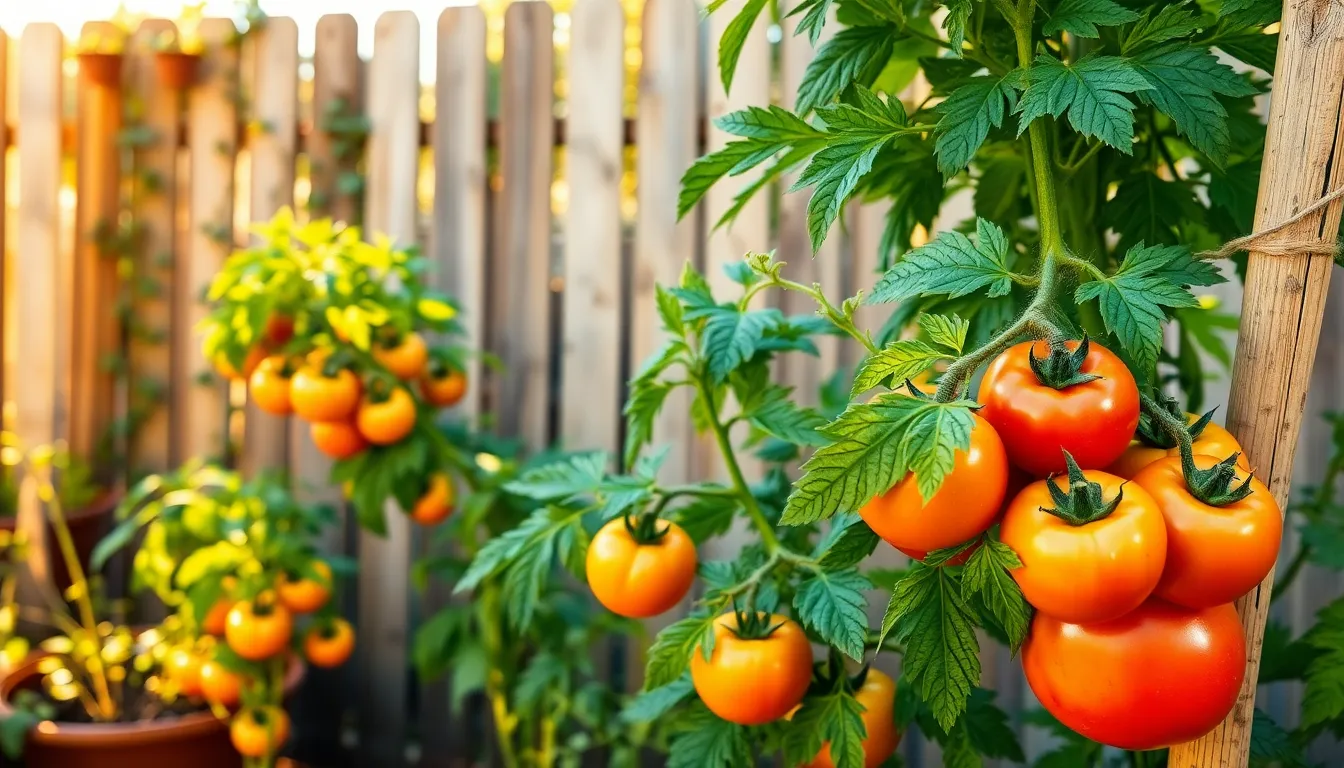Few gardening experiences compare to the satisfaction of plucking a ripe, juicy tomato straight from the vine, still warm from the sun. Whether you’re sowing your very first seeds or refining your techniques after years of cultivation, growing tomatoes is a delightful and rewarding endeavor that can transform your garden into a vibrant, edible landscape.
For beginners, the journey of nurturing tomatoes from seed to harvest is not only a practical skill but also a gateway into the world of homegrown produce. Experienced gardeners, too, can find new insights and techniques to enhance their tomato yields and explore new varieties. In this article, we’ll delve into the essentials of tomato cultivation, from choosing the right varieties for your climate to mastering the art of watering and pest management.
Beyond just the basics, we’ll uncover the secrets to maximizing flavor and ensuring a bountiful harvest, so your efforts are rewarded with the best possible crop. By the end, you’ll have a comprehensive understanding of how to grow tomatoes that are not only delicious but also a testament to your gardening prowess. Together, let’s embark on this journey to transform your garden with a bounty of tomatoes, ready to grace your table with their vibrant taste and beauty.
Select Ideal Tomato Seedlings
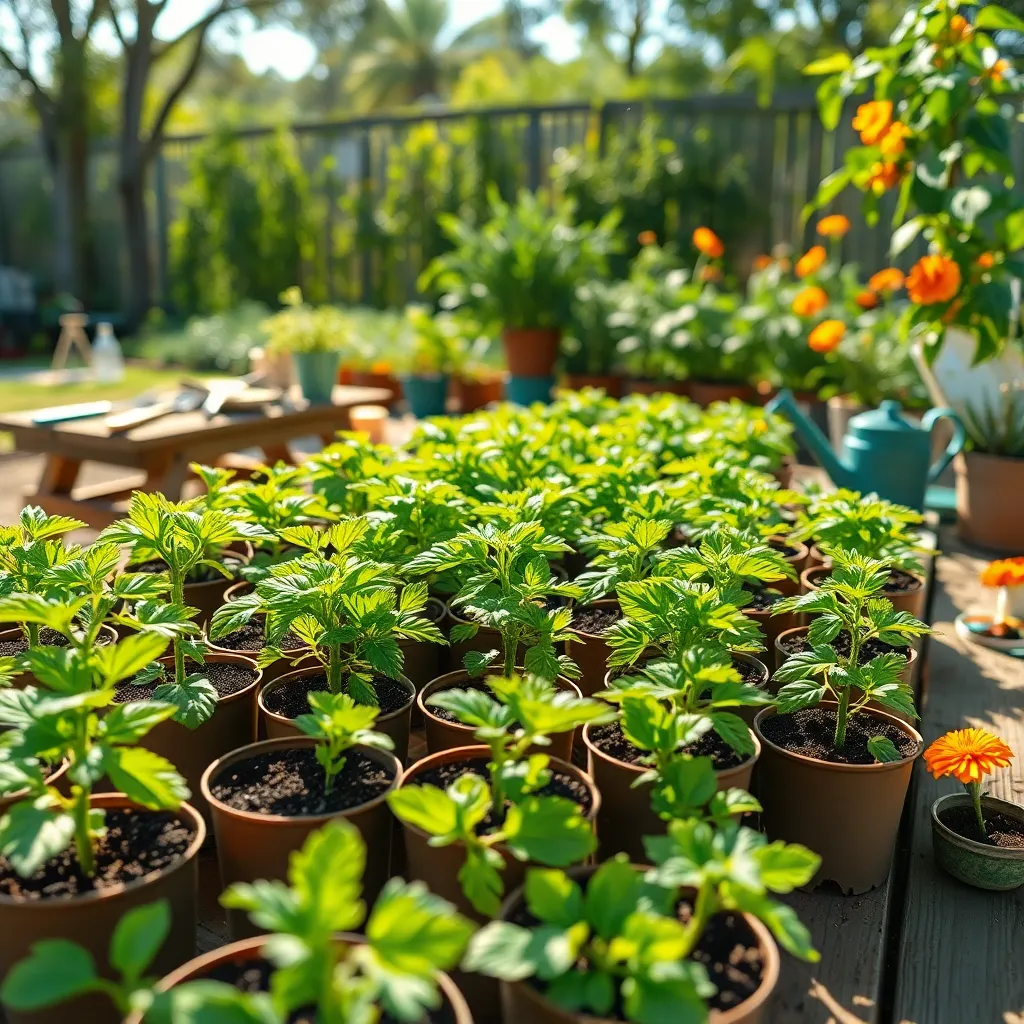
When selecting tomato seedlings, look for those with a strong, sturdy stem, as this indicates a healthy plant. Avoid seedlings with yellowing leaves or those that appear leggy, as these can signal underlying issues.
Ensure the seedlings have a well-developed root system by gently checking the root ball. Healthy roots should be white and fibrous, not brown or mushy, which can indicate root rot.
Choose varieties that suit your climate and growing space, whether it’s an indeterminate type for large gardens or determinate for smaller, confined spaces. Check the seedling labels or ask at your local nursery to ensure you select a variety that will thrive in your conditions.
For more experienced gardeners, consider grafted tomato seedlings, which can offer increased disease resistance and vigor. These may initially cost more but can lead to higher yields and healthier plants.
Ensure Optimal Sunlight Exposure
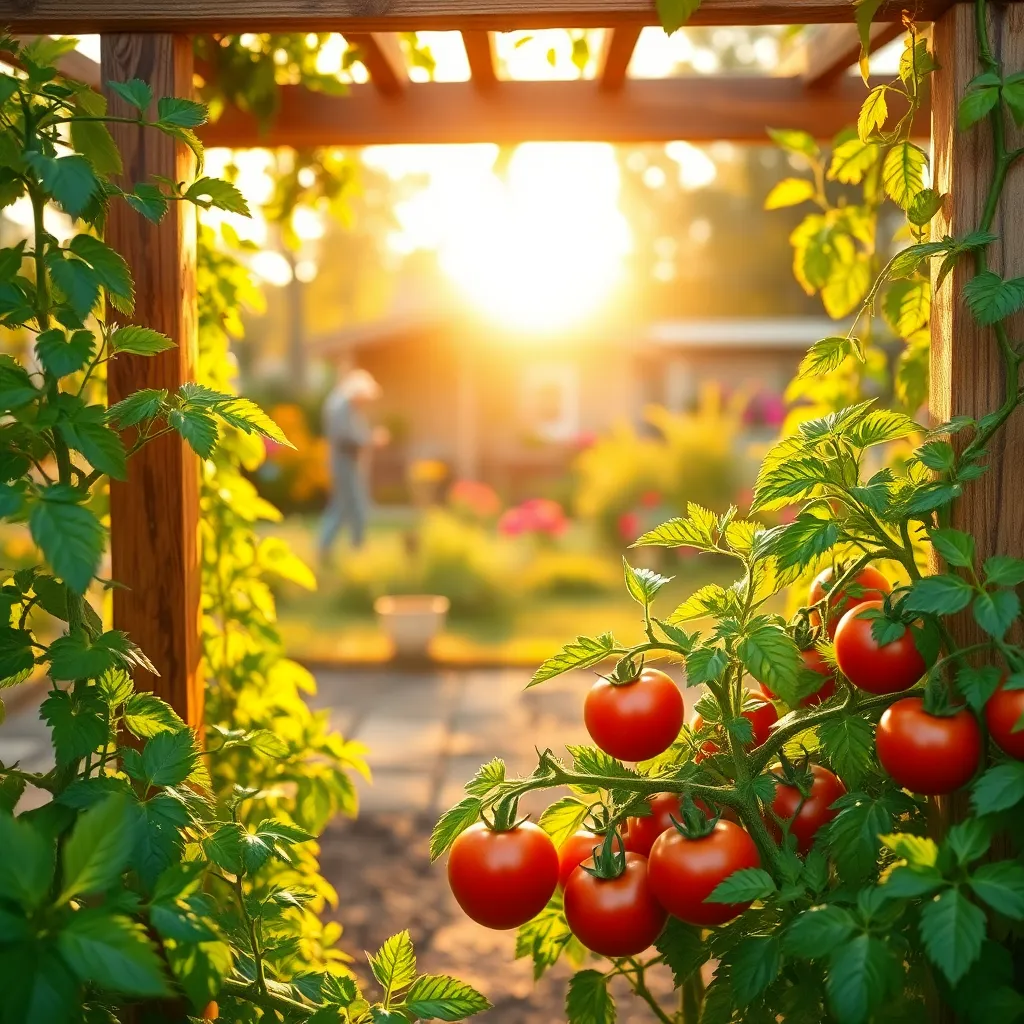
Tomatoes need at least six to eight hours of direct sunlight each day to thrive. Position your tomato plants in the sunniest spot available in your garden to ensure they receive the required amount of light.
For those in regions with intense afternoon sun, consider providing some afternoon shade to prevent heat stress. Use shade cloth or plant taller companion plants nearby, such as corn or sunflowers, to offer dappled shade.
In areas where sunlight is limited, using reflective surfaces can maximize light exposure. Placing white or light-colored surfaces like walls or boards near your plants can help bounce sunlight onto the tomatoes, enhancing their growth.
Advanced gardeners might explore the use of grow lights to supplement natural sunlight, especially in climates with long winters. Choose full-spectrum LED grow lights and place them about 12 inches above the plants for optimal results.
Water Consistently and Evenly
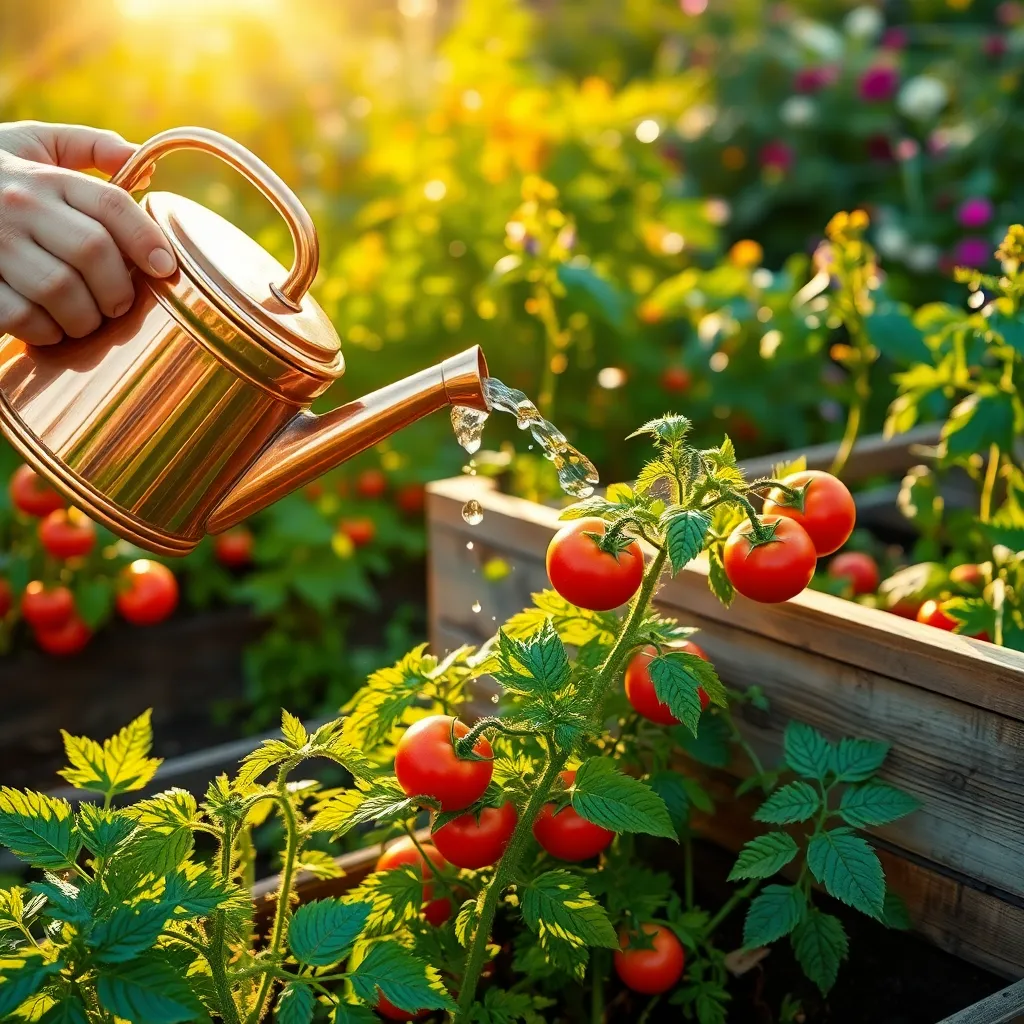
Tomatoes thrive when they receive consistent and even watering, helping them avoid issues like blossom-end rot. It’s crucial to maintain a regular watering schedule, ensuring the soil stays moist but not waterlogged.
To achieve this, check the soil moisture regularly by inserting your finger about an inch into the soil. If it feels dry, it’s time to water, but if it’s still moist, hold off to prevent overwatering.
Morning is the best time to water, allowing the foliage to dry and reducing the risk of fungal diseases. Using a soaker hose or drip irrigation system can help deliver water directly to the roots, minimizing evaporation and ensuring even distribution.
For those looking to optimize their watering routine, mulching around plants can help retain soil moisture and regulate temperature. Choose organic mulches like straw or shredded leaves, which will also enrich the soil as they decompose.
Support Plants with Sturdy Stakes
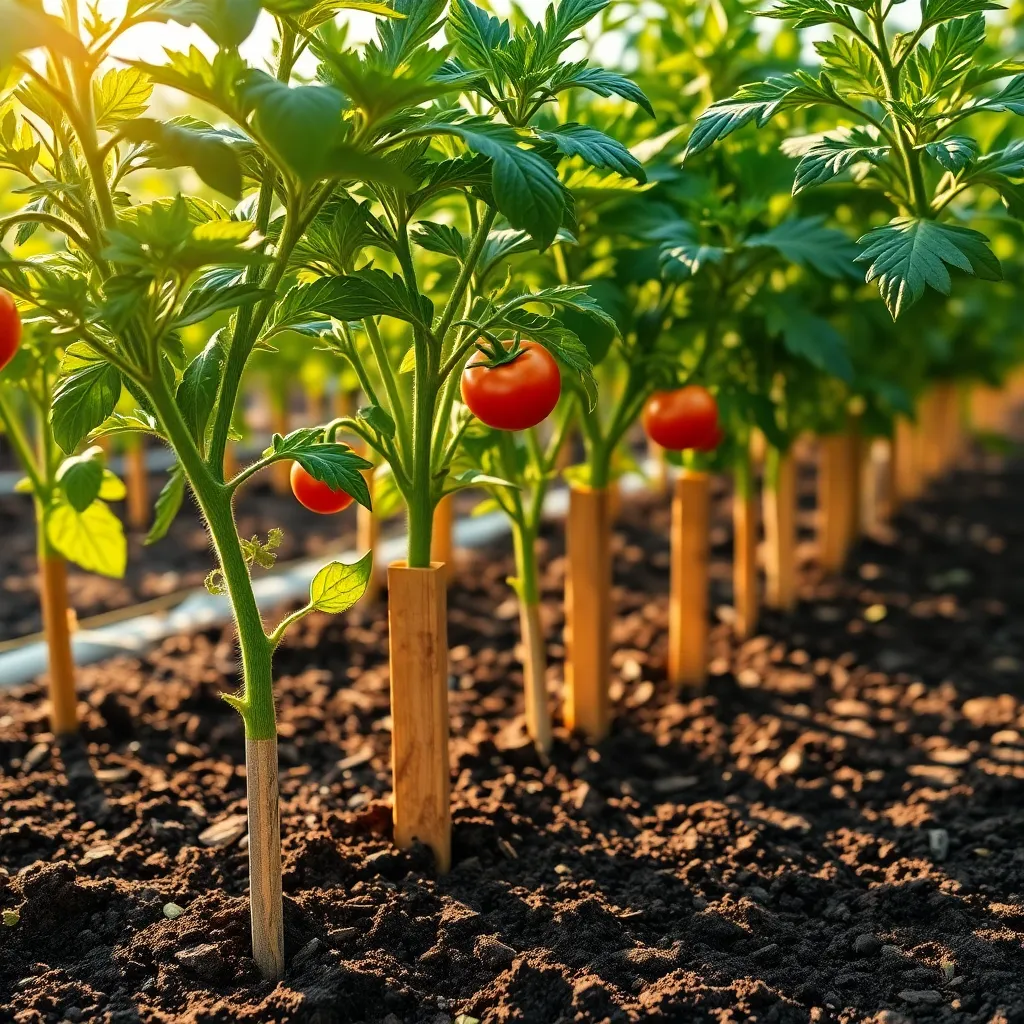
To ensure your tomato plants thrive, supporting them with sturdy stakes is essential. Staking helps prevent the plants from sprawling on the ground, which reduces the risk of rot and pest infestations.
A common method is to use wooden stakes that are at least six feet tall. Drive the stake into the ground about a foot away from the plant to avoid damaging the roots, and tie the main stem loosely to the stake using soft plant ties or strips of fabric.
As the tomato plant grows, continue to tie the stems to the stake every 8 to 12 inches. This will keep the plant upright and allow for better air circulation, which is crucial for disease prevention.
For gardeners looking for a more advanced technique, consider the Florida Weave, especially useful in larger tomato patches. This method involves using stakes at both ends of a row and weaving twine around the plants to provide support as they grow.
Monitor for Pests and Diseases

Regular monitoring for pests and diseases is essential to ensure your tomato plants thrive. It’s important to inspect your plants at least once a week, focusing on the undersides of leaves and the base of the stems where pests often hide.
Look for signs such as discolored leaves, holes, or wilting, as these can indicate pest or disease presence. Early detection allows for prompt action, reducing the risk of widespread damage to your plants.
For beginners, consider using organic pest control methods like neem oil or insecticidal soap to manage common pests such as aphids and whiteflies. These solutions are gentle on plants and safe for the environment, making them a great choice for home gardens.
Advanced gardeners might explore companion planting to naturally deter pests. Plants such as marigolds and basil can repel harmful insects and should be planted near your tomatoes for added protection.
Conclusion: Growing Success with These Plants
In nurturing relationships, just as in growing tomatoes, the right care and attention yield the best results. Let’s recap the five key concepts to enrich your partnerships: First, provide consistent support, akin to watering your tomato plants regularly. Second, ensure open communication, much like ensuring your plants receive enough sunlight. Third, practice patience, understanding that growth takes time. Fourth, address issues promptly, as you would with any pests or diseases. Lastly, celebrate the small victories, just as you would rejoice at the sight of the first tomatoes ripening.
To put these into practice, choose one concept to focus on this week and observe how it positively impacts your relationship dynamics. As you embark on this journey of growth, be sure to bookmark this guide as your nurturing manual for relationship success.
Remember, the garden of relationships thrives with ongoing care and attention. By investing in these practices today, you’re planting the seeds for a flourishing future. Save this article and revisit it whenever you need a reminder of the steps to a thriving partnership. Your commitment to growth and understanding sets the foundation for a lifetime of relationship success.

